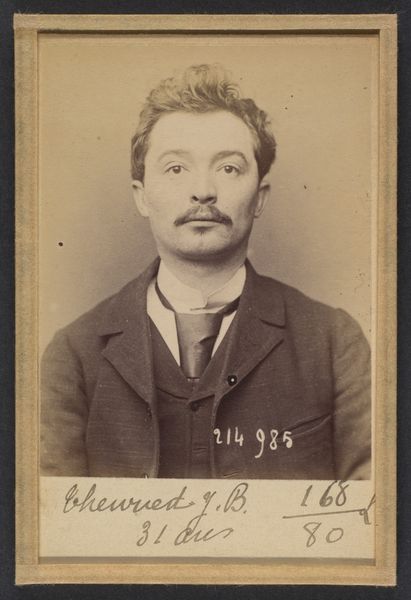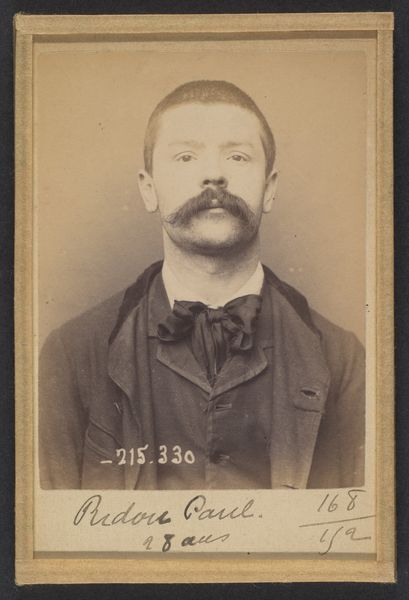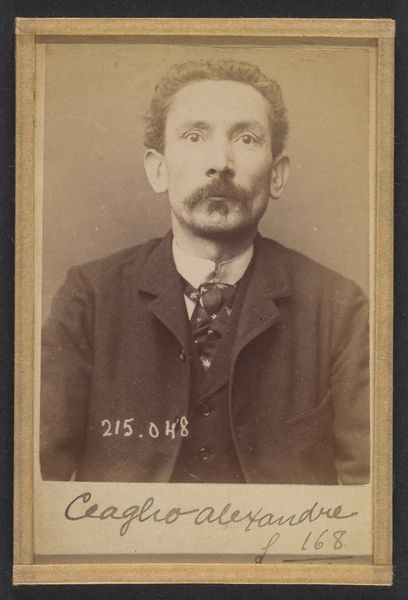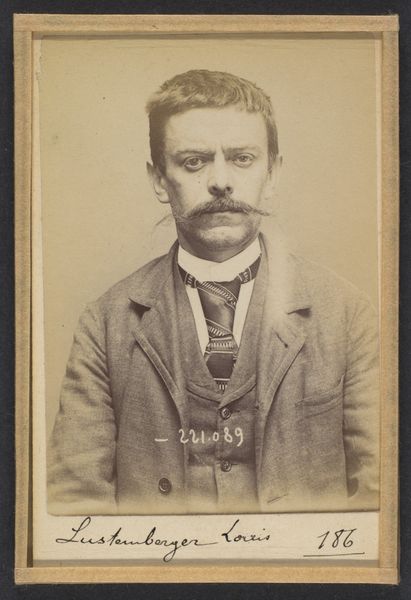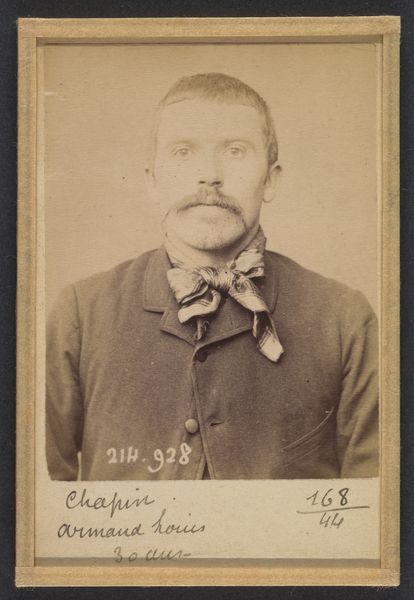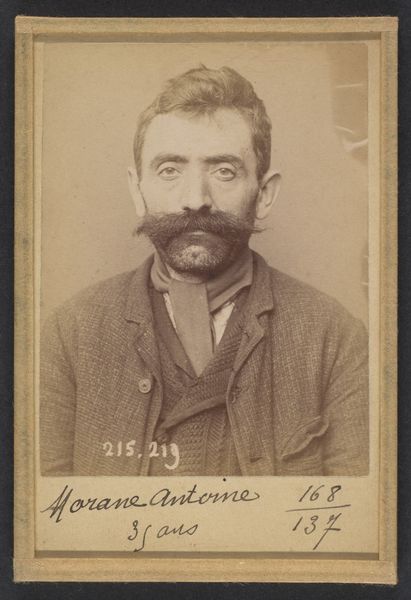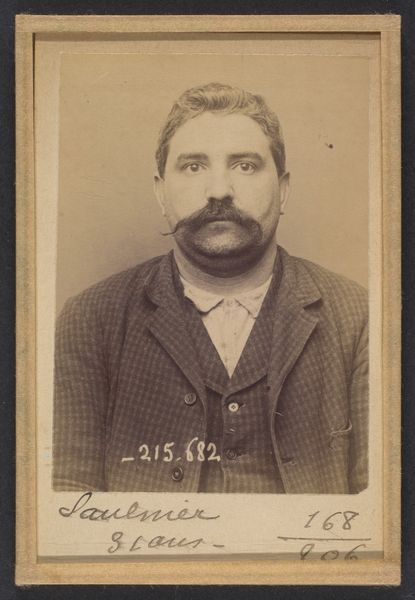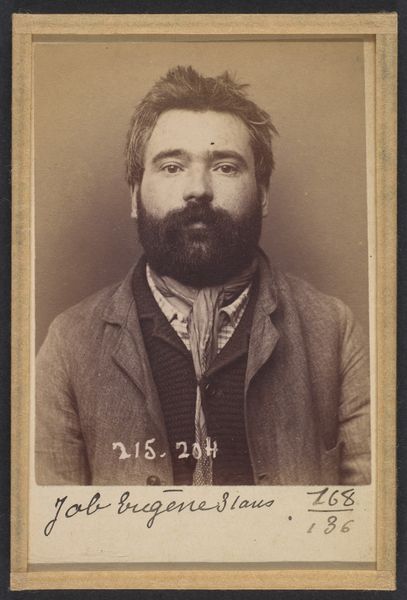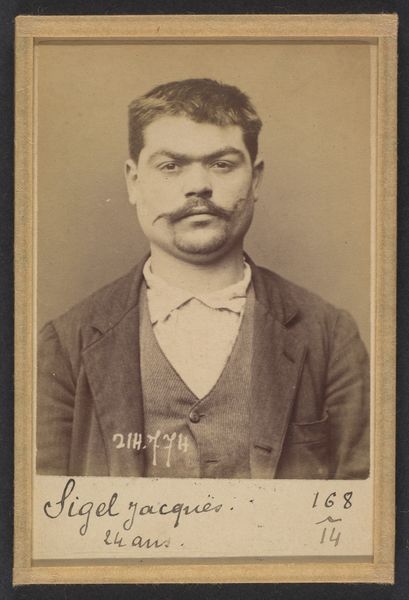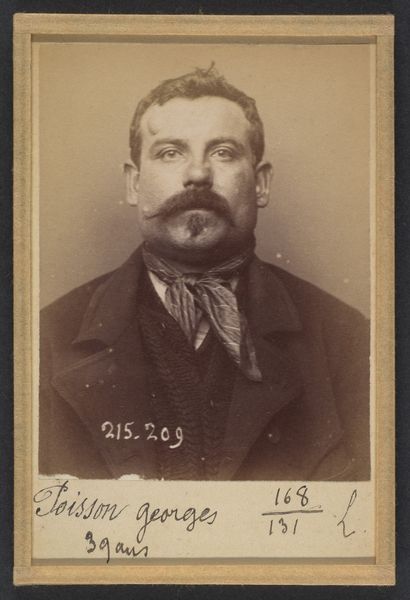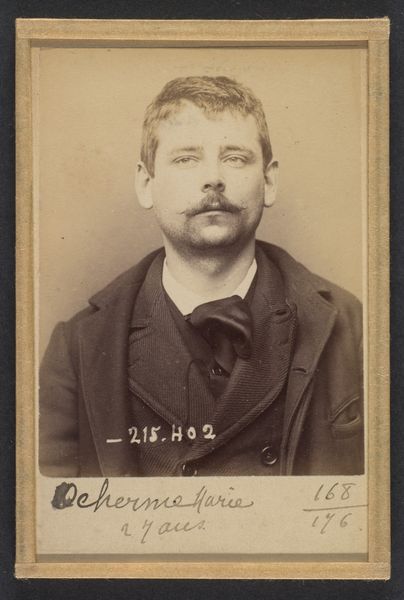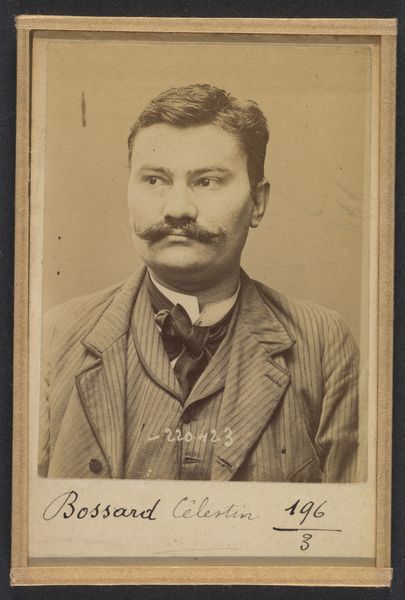
Pivier. Alexandre. 53 ans, né à Rochevan (Savoie). Tailleur d'habits. Anarchiste. 7/3/94. 1894
0:00
0:00
photography
#
portrait
#
16_19th-century
#
photography
#
19th century
#
men
#
history-painting
#
realism
Dimensions: 10.5 x 7 x 0.5 cm (4 1/8 x 2 3/4 x 3/16 in.) each
Copyright: Public Domain
Curator: Looking at this sepia-toned portrait, there's a palpable sense of defiance, wouldn't you say? He seems unyielding. Editor: Yes, I get a strong sense of foreboding. But let’s contextualize this image a bit. This is "Pivier. Alexandre. 53 ans, né à Rochevan (Savoie). Tailleur d'habits. Anarchiste. 7/3/94.", created in 1894. The image comes to us courtesy of Alphonse Bertillon, the inventor of the mugshot. Curator: Exactly! It's part of the Bertillonage system, a method developed to identify repeat offenders through a series of anthropometric measurements and photographs. A profoundly disturbing application of visual representation for the sake of the state. Editor: Absolutely. And it reveals a lot about the socio-political climate of late 19th-century France, especially concerning the state's attitude towards anarchist movements. The crisp photography captures his features in sharp detail, ostensibly for identification purposes, yet, the effect is dehumanizing, stripping Pivier of his individuality, reducing him to a subject of state surveillance. The very caption beneath the photo reinforces this – reducing him to age, birthplace, profession and political leaning. Curator: Note also the deliberate way Pivier is positioned and lit. It's a formal portrait in a way, but devoid of any flattering artistic license. This unflinching gaze into the camera conveys a message of resistance against what must be quite dire conditions for him. Editor: This "portrait" really complicates the genre doesn’t it? Pivier's intense gaze and dignified posture seem to challenge the dehumanizing intentions of Bertillon’s system. It's as though he is reclaiming his humanity through the very act of being photographed as a criminal, an anarchist. Curator: The image speaks volumes about power, resistance, and the human spirit. Pivier, labeled as "other", stares back, making the viewer complicit in a narrative far larger than a simple mugshot. Editor: Precisely, and in its afterlife this seemingly simple identification photograph allows us to ask essential questions about how state apparatuses attempt to strip human dignity using photography and measurement, whilst also prompting reflections on personal autonomy and the ability of an individual to regain some power, even when positioned under the power of a deeply politicized system.
Comments
No comments
Be the first to comment and join the conversation on the ultimate creative platform.
